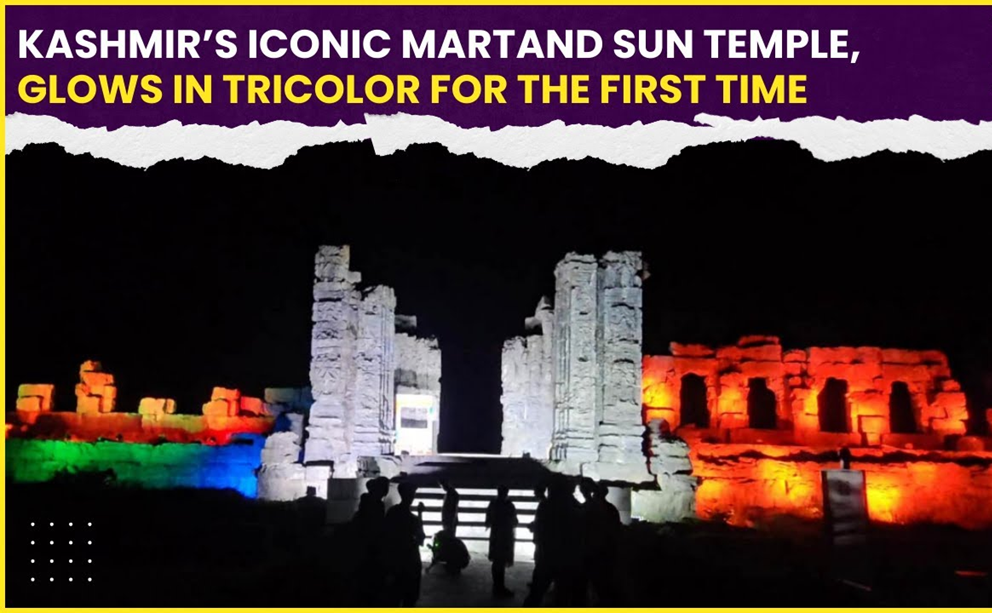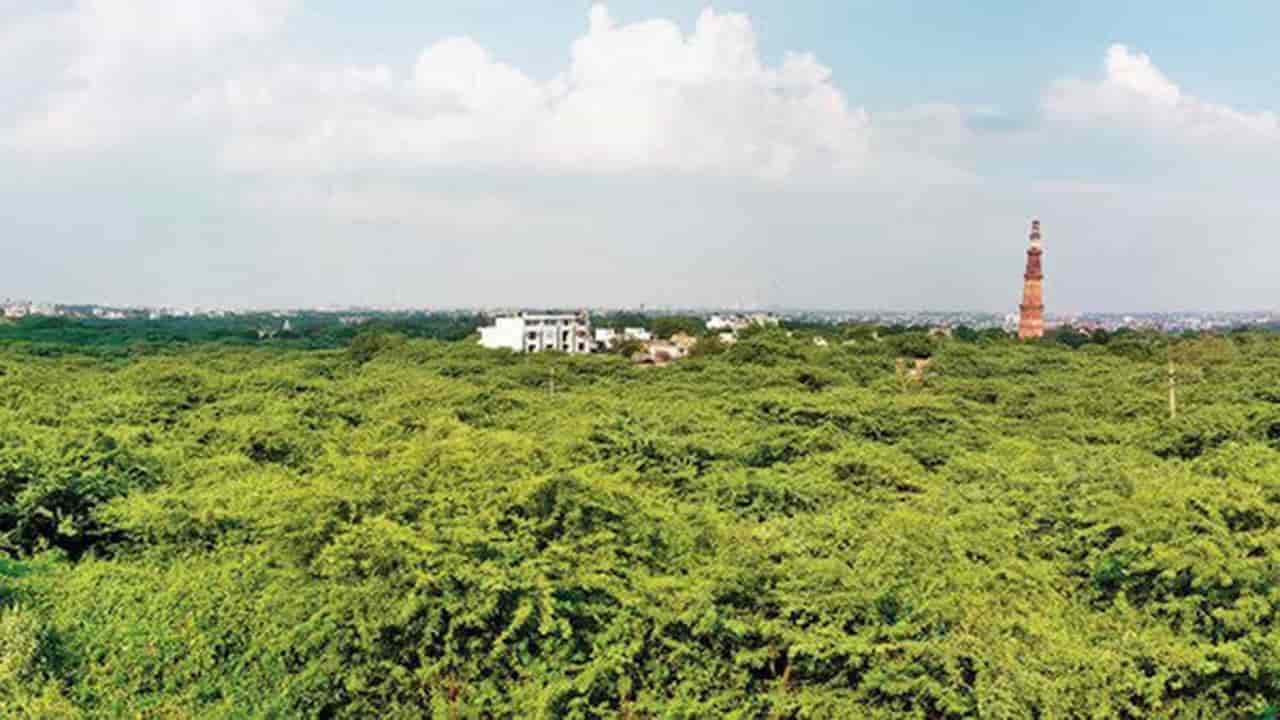- Courses
- GS Full Course 1 Year
- GS Full Course 2 Year
- GS Full Course 3 Year
- GS Full Course Till Selection
- Online Program
- GS Recorded Course
- NCERT (Recorded 500+ Hours)
- Polity Recorded Course
- Geography Recorded Course
- Economy Recorded Course
- AMAC Recorded Course
- Modern India, Post Independence & World History
- Environment Recoded Course
- Governance Recoded Course
- Science & Tech. Recoded Course
- International Relations and Internal Security Recorded Course
- Disaster Management Module Course
- Ethics Recoded Course
- Essay Recoded Course
- Current Affairs Recoded Course
- CSAT
- 5 LAYERED ARJUNA Mentorship
- Public Administration Optional
- ABOUT US
- OUR TOPPERS
- TEST SERIES
- FREE STUDY MATERIAL
- VIDEOS
- CONTACT US
Martand Sun Temple Glows in Tricolor for the First Time
Martand Sun Temple Glows in Tricolor for the First Time
18-08-2024

The Martand Sun Temple in Anantnag district, Jammu and Kashmir (J&K), has been illuminated with the tricolors of the Indian flag as part of the Independence Day celebrations.
- This event has brought a sense of pride and joy to local residents and tourists, drawing large crowds to witness this historic moment.
Key Facts About Martand Sun Temple:
-
Construction:
- Date: Built around 1200 years ago by King Lalitaditya Muktapida of the Karkota dynasty, who ruled Kashmir from 725 AD to 753 AD.
- Dedication: The temple was dedicated to Martand, the Sun god.
- Architecture: Featured grand architecture with influences from Egyptian, Greek, and Gandharan styles. It had massive grey stone walls and a courtyard filled with river water.
-
Historical Reference:
- Documentation: The temple's history is recorded in the Rajatarangini, a historical chronicle written by Kalhana in the 12th century.
-
Architectural Features:
- Chambers: The temple had three main chambers – the mandapa (hall), garbhagriha (sanctum), and antralaya (inner sanctum).
- Pillars: Ruins suggest the temple was surrounded by a peristyle of 84 pillars, typical of Kashmiri temple architecture.
- Construction Material: The use of lime mortar, unusual for its time, indicates the involvement of Byzantine architects.
-
Cultural Assimilation:
- Architectural Fusion: The temple’s design reflects a blend of Classical Greco-Roman, Buddhist-Gandhara, and North Indian styles, showcasing Kashmir’s historical connections with various cultures and empires.
-
Association with Harsha:
- Historical Note: King Harsha of the Lohara dynasty, known for looting temples for treasure, spared the Martand Temple, unlike others he desecrated.
-
Destruction:
- Historical Accounts: The temple was partially demolished by Sultan Sikandar Shah Miri, who ruled Kashmir from 1389 to 1413. This is debated among historians.
- Current State: The temple stands partially intact, with its grey walls and carved deities still visible. It is protected by the Archaeological Survey of India (ASI) as a “monument of national importance.”
Kashmiri Temple Architecture:
-
Unique Features:
- Trefoil Arches: Influenced by Gandhara art.
- Cellular Layout: Enclosed courtyard.
- Straight-edged Pyramidal Roof: Characteristic of the style.
- Column Walls and Triangular Pediments: Greek influence.
- Steps: Generally more numerous compared to other styles.
-
Historical Development:
- Golden Era: Temple architecture reached its peak under the Karakota and Utpala dynasties.
- Foreign Influences: Due to its location on important trade routes, Kashmir’s temple architecture shows a blend of various foreign styles.
Conclusion:
The illumination of the Martand Sun Temple in tricolors highlights its historical and cultural significance as part of India's Independence Day celebrations. This event not only celebrates the temple's rich heritage but also serves as a reminder of Kashmir’s unique architectural legacy. The Martand Sun Temple stands as a testament to the artistic and historical grandeur of ancient Kashmir and continues to be a symbol of national pride and historical preservation.




